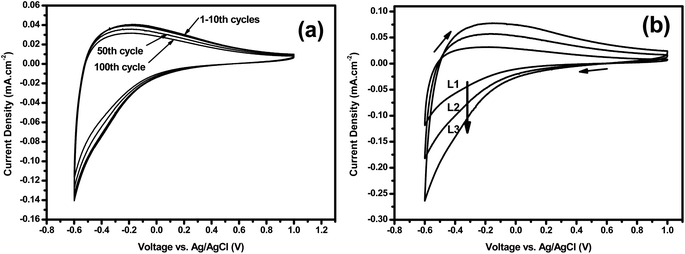Layer-controlled synthesis of WO3 ordered nanoporous films for optimum electrochromic application
作者:Hongwen Zhang,Guotao Duan, Guangqiang Liu,Yue Li,Xiaoxia Xu,Zhengfei Dai, Jingjing Wang and Weiping Cai
期刊:Nanoscale
卷(期)页:2013, 5, 2460-2468
全文链接:http://pubs.rsc.org/en/content/articlehtml/2013/nr/c3nr33378g

期刊:Nanoscale
卷(期)页:2013, 5, 2460-2468
全文链接:http://pubs.rsc.org/en/content/articlehtml/2013/nr/c3nr33378g

We report on a layer-controlled fabrication of two-dimensional (2D) WO3 ordered nanoporous films via a step-by-step template-assisted strategy. For this purpose, a polystyrene sphere monolayer colloidal crystal (MCC), capable of intact transfer, is adopted as the fabrication template. WO3 nanoporous films with a monolayer (L1), bilayer (L2) and trilayer (L3) were typically constructed and technical analysis illustrates that each layer is composed of fully crystalline monoclinic WO3nanoparticles and aggregated skeletons possessing hexagonally ordered arrangements at long range. Electrochromic characterization reveals that the ITO-based WO3 nanoporous films have long cycling stability over time and improvedcation insertion/extraction capacities with increasing film layer. The inserted/extracted cations of the L2 film are nearly twice that of L1, while slightly inferior to that of L3. For the L3 film, the excessive layer thickness results in longer cationdiffusion path lengths, leading to relatively poor charge reversibility. Therefore, the WO3 nanoporous bilayer films prepared in our work show optimum electrochromic properties after comprehensive characterization. Additionally, the uniform nanoporous film prepared by the proposed strategy can be successfully constructed onto a curved ceramic substrate with rough surfaces, which is still a challenge for traditional spin- or dip-coating methods. This substrate-compatible feature will facilitate construction of specific functional devices and layer-controlled fabrication by a low-cost strategy could find promising applications in chemical sensors, electrochromic windows, and so on.
